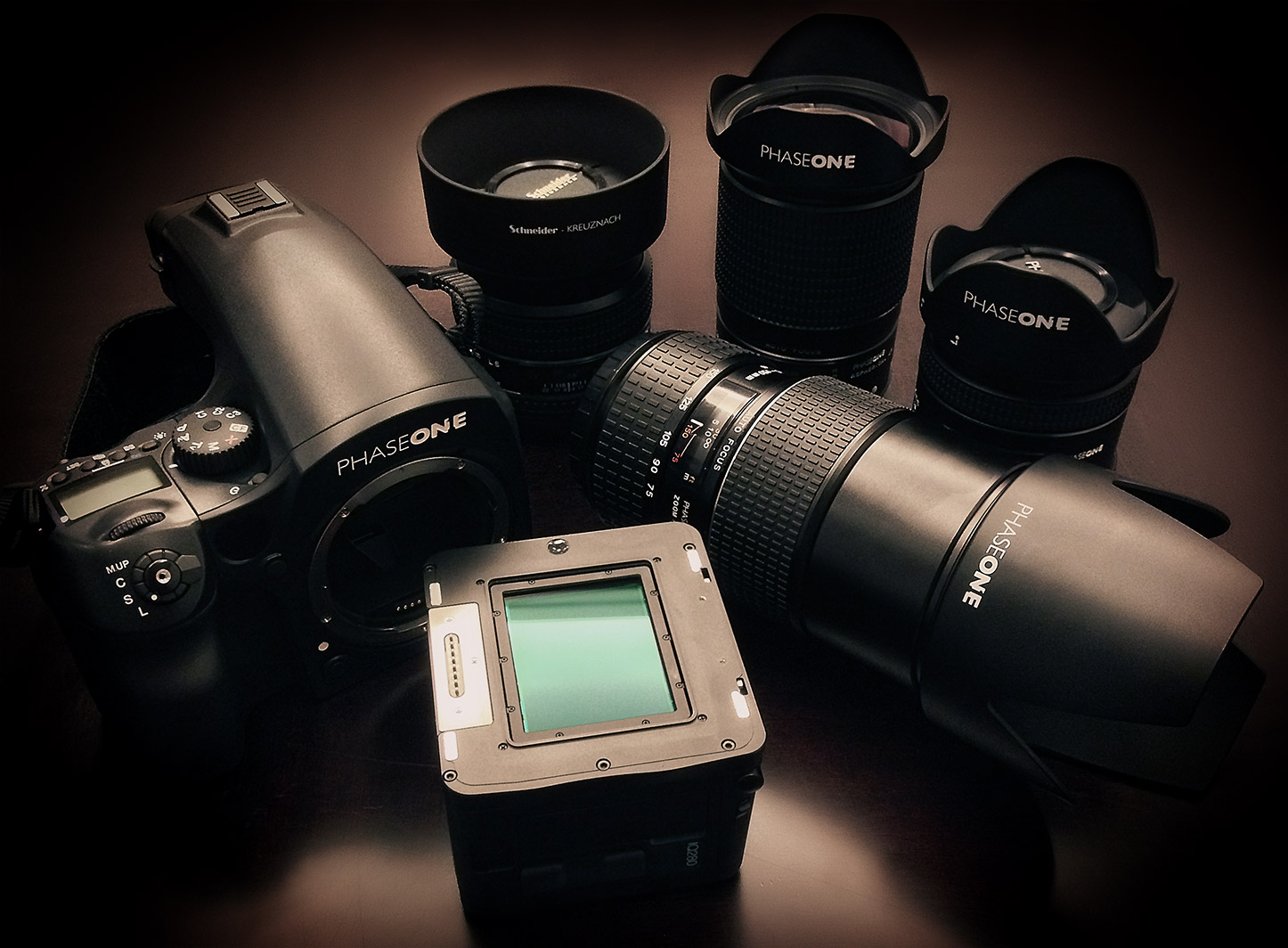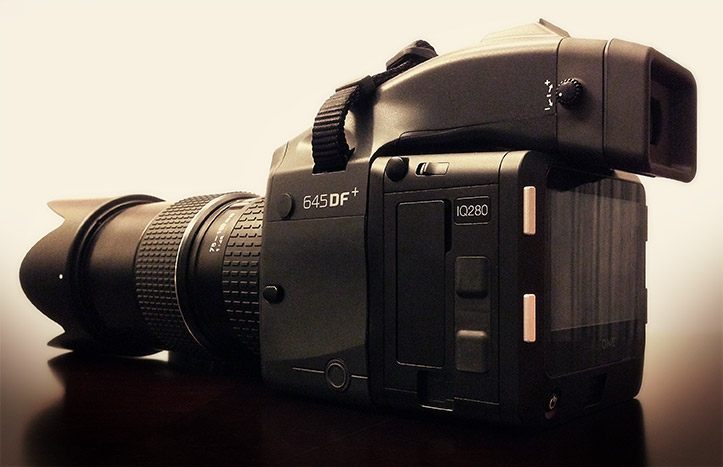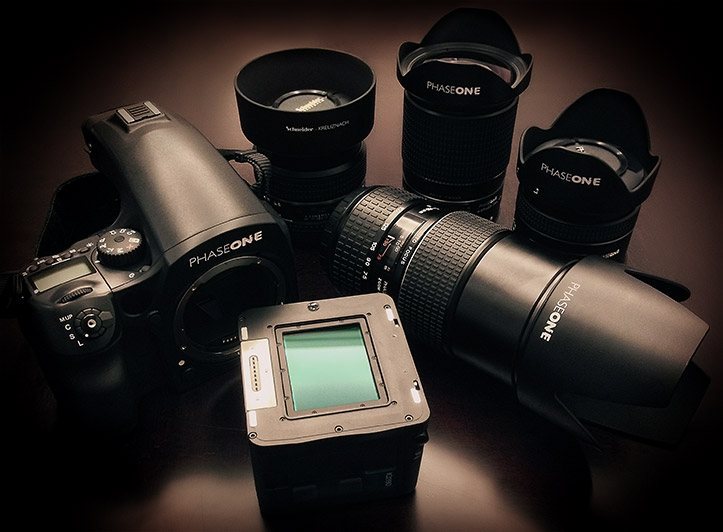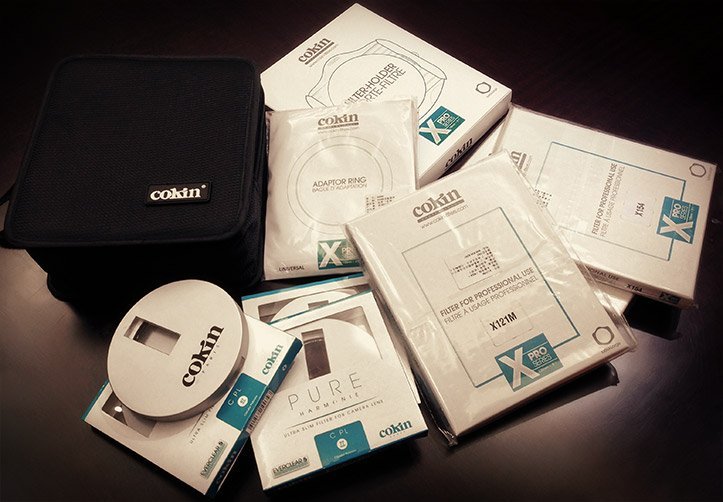The camera system, above, is (as Phase One say) “the pinnacle of image quality, offering some of the highest resolution captures of any commercially available camera” – and that’s a picture of it sat on my dining table!
That’s right, I’ve finally made the permanent switch to medium format. As a long-term Canon shooter (even my first compact film cameras were Canon) it’s a sad day in some respects as my Canon gear has been with me through thick and thin. Responsible for some of my favourite images I’ve shot from amazing places around the world I can’t really say a bad word about it and would recommend their EOS system to anyone. In reality, I’ll be keeping two of my EOS bodies and L lenses, but others will be sold as I switch to using my new 80 megapixel digital back to capture even more of the stunning landscapes I’m lucky enough to see.
Along with the digital back, the need for the right body and lenses is clearly just as important so I’ve added a few more things to the line-up in my gear bag. My new Benro case will be causing me back-strain from now on as I haul the new contents around the world:
- Phase One iQ280 Digital back
- Phase One 645DF+ Medium Format camera body
- Schneider Kreuznach Leaf-Shutter 80mm f/2.8 lens
- Phase One AF 28mm f/2.8 lens
- Phase One AF 45mm f/2.8 lens
- Phase One AFD 75-150mm f/4.5 lens
So, why the leap?
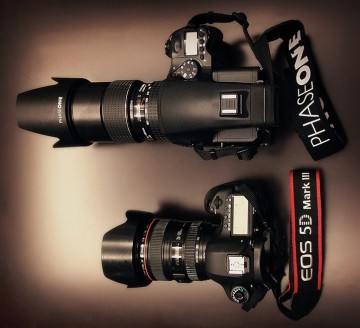 Given the cost of this stuff (ouch!), believe me, it’s a considered move to say the least. The fact is, I’ve used Canon camera equipment for so long that I’ve gotten used to its quirks as well as its features and have started to hit a wall I wasn’t expecting. Sadly it’s a wall that can’t be fixed by any 35mm DSLR EOS body. I’ve used the 5D2, 5D3, 7D, 1DX, M, the lot – and for landscapes, I still honestly believe the 5D3 is the best in the lineup that Canon currently offers.
Given the cost of this stuff (ouch!), believe me, it’s a considered move to say the least. The fact is, I’ve used Canon camera equipment for so long that I’ve gotten used to its quirks as well as its features and have started to hit a wall I wasn’t expecting. Sadly it’s a wall that can’t be fixed by any 35mm DSLR EOS body. I’ve used the 5D2, 5D3, 7D, 1DX, M, the lot – and for landscapes, I still honestly believe the 5D3 is the best in the lineup that Canon currently offers.
The problem is, that’s great while you’re printing up to 42″. Beyond that, the quality of the print on the wall shows signs of the pixels struggling to keep up with the dimensions. Nikon have a great answer to this in their 35mm DSLR format: the D800/D800E. At 36mp it’s an amazing bit of kit for landscape photography with that sensor squeezed in there, but having seen the results in my opinion it’s still not quite really “up there” either.
What about the Hasselblad option? I looked seriously at the H5D-50. It’s a great camera, really, but then that’s a lot of money to spend on a closed system (you can only use their lenses) and at 50mp it’s still shooting on a smaller physical sensor (36.7 x 49.1mm compared to 40.4 x 53.7mm with Phase One) and delivers images of 8176×6132 pixels – quite a bit smaller than the near 11,000 pixels wide of the iQ280’s output. For printing BIG, every pixel counts, and while none of these cameras come close to the level of detail provided by large-format film, in the current market the iQ280 is the best I can get. Beyond that, having played with their workflow and editing software “Capture One“, I really do get the complete solution with Phase One.
Of course, some downsides do exist with the iQ2 series and 645DF+ body : fast shooting? NO way! Try the blistering frame rate of 0.7/second for a start. 🙁 So, for events/concerts my Canon gear will still undoubtedly be making an appearance. It’s also not nearly as weatherproofed either, so my old friends the “rain sleeves” will come in very handy when I stand looking over mountains in a storm!
The upsides, however, really do outweigh those two issues. The lenses I’ve got are incredibly sharp, and the detail this kit can produce is beyond comparison from what I’ve seen with other systems. The Leaf Shutter (Schneider) lens I have will also allow me to experiment with insanely high flash sync speeds at 1/1600s and while that shutter system adds a lot to the weight, for studio work that’s definitely something to play with in future.
Of course, what’s in front of the glass can be just as important as what’s behind, so I’ve also taken the opportunity to upgrade my filter set. To that end, I had a bit of a splurge with my local Cokin dealer… 😉
The new X-Pro filters I’ve got are a great example of amazing optical engineering. Not cheap, by any means, but the grads, polarisers and NDs I now have really do add something to the images I can capture. Of course, I don’t always want a full filter frame stuck to the front of my camera so I also grabbed a set of some ultra-thin “Pure” screw-in filters. Made of “harmonite” these things are amazingly slim and have a clarity I’ve never before seen in a standard filter.
So, all this stuff arrived just in time for my trip to California this week. With Napa, Lake Tahoe, Yosemite and San Francisco “in the frame”, I’m really looking forward to putting the new Phase One gear through its paces (as I’m sure it’ll put me through mine too!)
Oh, and apologies for the lack of updates for the past 3-4 weeks. As you can see, I’ve been a little bit busy…
😉
